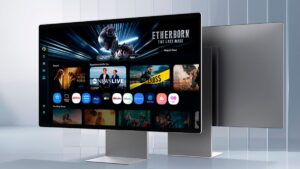Data science, tools, and technologies aren’t immune to the wave of different generative AI offerings. As many know, within the field, there are tools that are constantly emerging to help professionals make sense of vast amounts of data. Many are now being powered by generative AI, but is it the magic bullet? Well in many cases, that short answer is not. Well, at least not yet, but why is that exactly?
Though there’s a lot of hype behind generative AI, there’s still a lot of reason to know that it won’t upend the data visualization world. So let’s look at some of the limits generative AI has when it comes to data visualization and maybe you’ll learn something new that can help you better find the right tools to visualize your data.
In-person conference | May 13th-15th, 2025 | Boston, MA
Join us on May 13th-15th, 2025, for 3 days of immersive learning and networking with AI experts.






The Limitations of Generative AI in Data Visualization
Generative AI tools, such as Bard, ChatGPT, and others, have made significant strides in various applications. With that said the capabilities of these models when it comes to data visualization are still limited. Now you may ask, why? Well, the thing is that these tools are designed to generate text and images based on patterns learned from existing data, but they often fall short of delivering the nuanced and precise visualizations needed in data science.
For instance, let’s consider an example of using a free generative AI tool to create a basic bar chart. While the AI can generate a chart, it often lacks the customization options necessary to tailor the visualization to specific needs. Colors, labels, scales, and other critical elements might not be as easily adjustable as they would be in specialized data visualization software like Tableau or Power BI.
So in other words, Bard, ChatGPT, and others may be good for coming up with ideas, but when it comes to execution, they still lack. And we’ll look at a few more reasons as to why.
The Lack of Customization
You don’t have to be a pro in data viz to know that customization is a crucial aspect of being able to effectively visualize data. Each dataset is unique, and the ability to tweak every detail of a chart to best represent the data is essential. Generative AI tools, however, typically offer limited customization options. And even if they allow you to change aspects of the visuals, errors are still a major fact. That’s why this lack of flexibility can result in generic and uninspiring visualizations that fail to convey the story behind the data.
For example, a generative AI tool might produce a bar chart with default color schemes and labels. While this might suffice for a quick overview, it doesn’t allow for the level of detail and personalization that a data scientist might need to highlight specific trends or insights – this is especially important if you’re audience/stakeholders aren’t familiar with the data. In contrast, dedicated data visualization tools provide extensive customization options, enabling users to adjust every aspect of their charts to ensure clarity and impact.
That way data pros are able to convey complex information into visually appealing pieces of information that bring out questions instead of stomping the audience.
Level Up Your AI Expertise! Subscribe Now:
![]()
![]()
The Absence of Personal Touch and Storytelling
One of the most significant drawbacks of using generative AI for data visualization is the lack of a personal touch and storytelling. Data visualization is not just about presenting data; it’s about telling a story that resonates with the audience. This requires a deep understanding of the data, the context, and the audience’s needs.
Generative AI, while capable of producing visualizations, often fails to incorporate the critical narrative elements that make data compelling. It generates visuals based on patterns but doesn’t understand the underlying message that needs to be communicated. Similar to what was mentioned in the previous section, tools such as Google Gemini, can often fail at extracting important context that leaves those that you’re working with, or attempting to educate, no closer to understanding the topic at hand.
The Barrier of Paywalls
Many generative AI tools are locked behind paywalls, limiting access to their full capabilities. Of course, this isn’t something new, most data scientists and data analytics professionals are well-versed in the fact that most tools aren’t free. But there are two things. First, this can be a significant barrier for data scientists and organizations looking to leverage these tools for data visualization. Second, considering the lack of customization and other needed tools/features that make data visualization possible, it becomes difficult to justify the cost.
For instance, let’s compare a free generative AI tool with a paid data visualization software. The AI tool might generate a basic line chart, but it might lack advanced features such as interactive elements, advanced analytics, and high-quality graphics. On the other hand, a paid tool like Tableau offers a comprehensive suite of features designed specifically for data visualization, allowing for more detailed and impactful presentations. Plus, many of these tools are already adding AI-powered features to make operating them more effective.
Free Tool vs. Professional Visualization
To illustrate the limitations of generative AI in data visualization, let’s create a simple chart using a free AI tool. The result is likely to be a basic, static chart with minimal customization options. Now, compare this with a professionally designed visualization using a tool like Tableau. The professional visualization will likely be more detailed, interactive, and tailored to the specific needs of the data, providing a much richer and more engaging experience for the audience.
Conclusion
While generative AI has its strengths, relying on it solely for data visualization is not advisable. So it’s not all doom and gloom when it comes to data visualization and generative AI. The thing users need to understand is that there are issues of limitations – customization, lack of personal touch and storytelling, and barriers posed by paywalls – that make these models less effective than specialized data visualization tools.
For data scientists and professionals looking to create impactful visualizations, investing in dedicated software remains the better choice. Now if you’re interested in upping your data visualization game so you can take that unmanageable data set and turn it into a full-length journey, then you don’t want to miss ODSC Europe September 5th-6th and ODSC West October 29th-31st.
You’ll not only experience hands-on training and talks that will equip you with the tools needed to give your data a voice, but you’ll carry these skills into your career’s own story.
Get your pass for either conference today, in-person or virtual, and give your data a story worth listening to.







